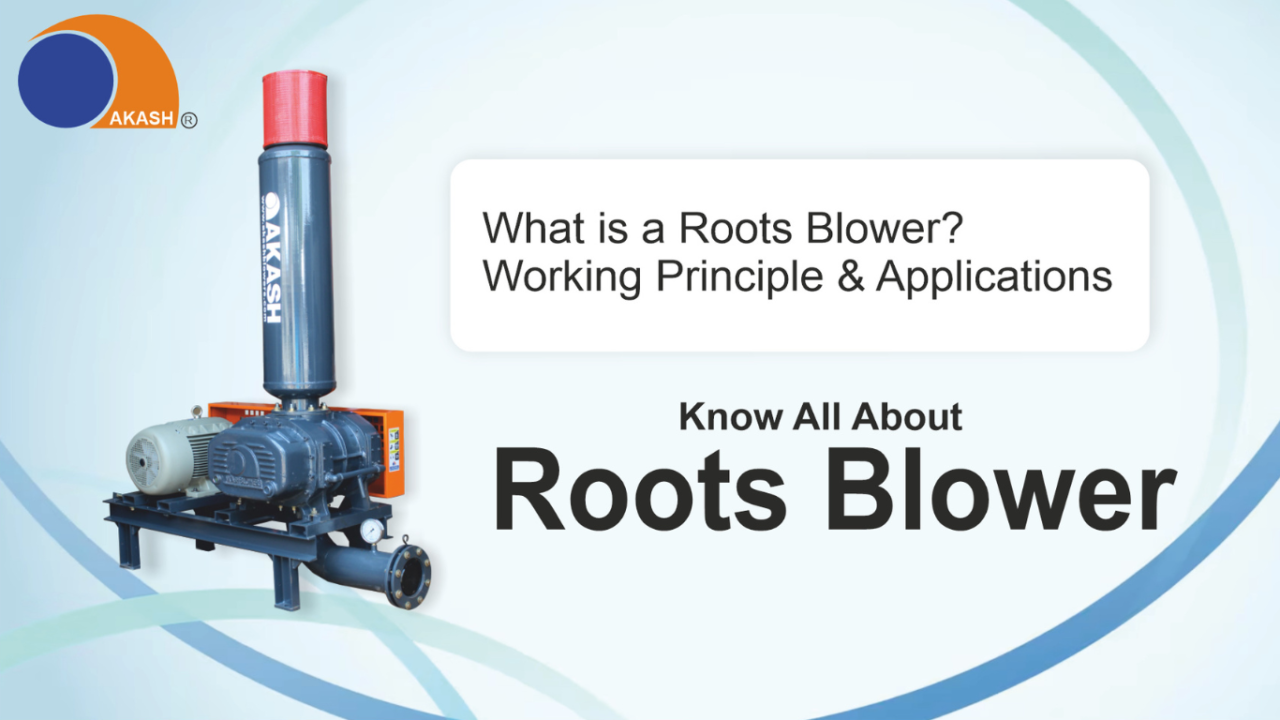Ever heard of a Roots Blower? No? Well, imagine a super-powerful air pump that doesn’t just push air but blasts it with precision. Whether it’s wastewater treatment, cement plants, or even aquariums, these machines are the unsung heroes that keep industries running smoothly. So, let’s dive into the world of Roots Blowers in a simple, no-nonsense way.
What is a Roots Blower?
A Roots Blower is a type of positive displacement blower that moves air (or gas) from one place to another using two rotors that rotate in opposite directions. Think of it like two gears meshing together but with a little gap, so air gets trapped and pushed forward. These blowers don’t compress air inside but rather force it through, creating a constant airflow.
In simple terms:
- It’s like a giant fan but way more powerful.
- It doesn’t compress the air; it just moves it.
- It’s used in places where a steady, reliable air supply is needed.
How Does a Roots Blower Work?
The working principle of a Roots Blower is straightforward and efficient. Here’s a quick breakdown:
- Two Rotors, No Contact – Inside the blower, there are two rotors shaped like the number ‘8’ (called lobes). These rotate inside a chamber without touching each other.
- Air Gets Trapped – As the lobes rotate, they trap air from the inlet side and push it forward.
- Continuous Flow – This air gets forced out through the outlet, creating a continuous stream of air.
- No Internal Compression – Unlike a compressor, a Roots Blower doesn’t squeeze the air; it just moves it from one end to the other.
It’s like pushing water with a paddle wheel—steady and powerful.
Also Read: What is a Multi-Disc Screw Press and How Does it Work?
Where Are Roots Blowers Used?
Now that you understand how it works, let’s discuss its applications. You might not notice them, but they are essential in many industries.
1. Wastewater Treatment Plants (STP/ETP)
- Roots Blowers supply air to aeration tanks in Sewage Treatment Plants (STP) and Effluent Treatment Plants (ETP).
- The air helps bacteria break down waste, making water cleaner before it’s released.
2. Cement & Power Plants
- Used for pneumatic conveying of cement, fly ash, and other dry bulk materials.
- Helps in combustion processes by supplying air to burners.
3. Aquaculture & Fisheries
- Used in fish farms and aquariums to oxygenate water.
- More oxygen results in healthier fish and increased productivity for fish farmers.
4. Chemical & Pharmaceutical Industries
- Helps in vacuum filtration, aeration, and gas transfer.
- Ensures proper air circulation in chemical processes.
5. Paper & Textile Industries
- Used in drying and air circulation processes.
- Helps maintain required pressure levels in machines.
6. Steel & Metallurgy Plants
- Assists in air combustion for furnaces.
- Used for degasification and material handling.
Why Choose a Roots Blower?
Here’s why industries prefer Roots Blowers:
- Constant & Reliable Airflow – Unlike compressors, they provide a steady flow of air.
- Low Maintenance – Fewer moving parts mean less wear and tear.
- Energy Efficient – Uses less power compared to other air-moving devices.
- Long Life – Built to last, even in harsh industrial environments.
How to Maintain a Roots Blower?
To keep a Roots Blower working smoothly, follow these maintenance tips:
- Regular Lubrication – Keep the bearings and gears lubricated.
- Check for Leaks – Any air leaks reduce efficiency.
- Clean Air Filters – Dust and dirt can block airflow.
- Monitor Temperature – Overheating can damage internal parts.
Final Thoughts
Roots Blowers may not be something you see every day, but they play a crucial role in industries we rely on. From keeping our water clean to making sure fish farms run smoothly, these machines are indispensable. If you’re in an industry that needs air movement, a Roots Blower is a reliable solution.
Looking for the best Roots Blowers in the market? Contact us today and get the perfect air solution for your business.




 FSC India.
FSC India.